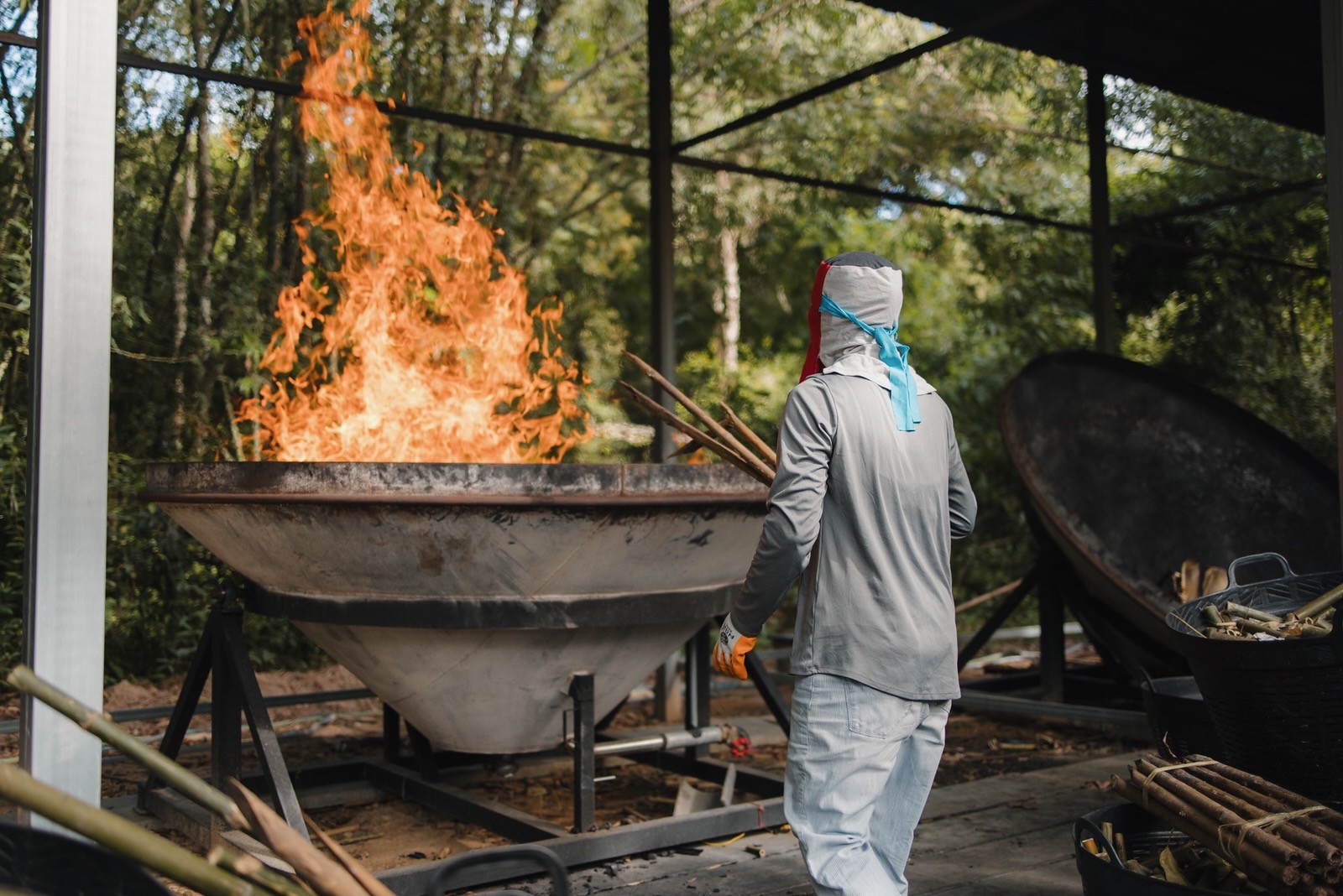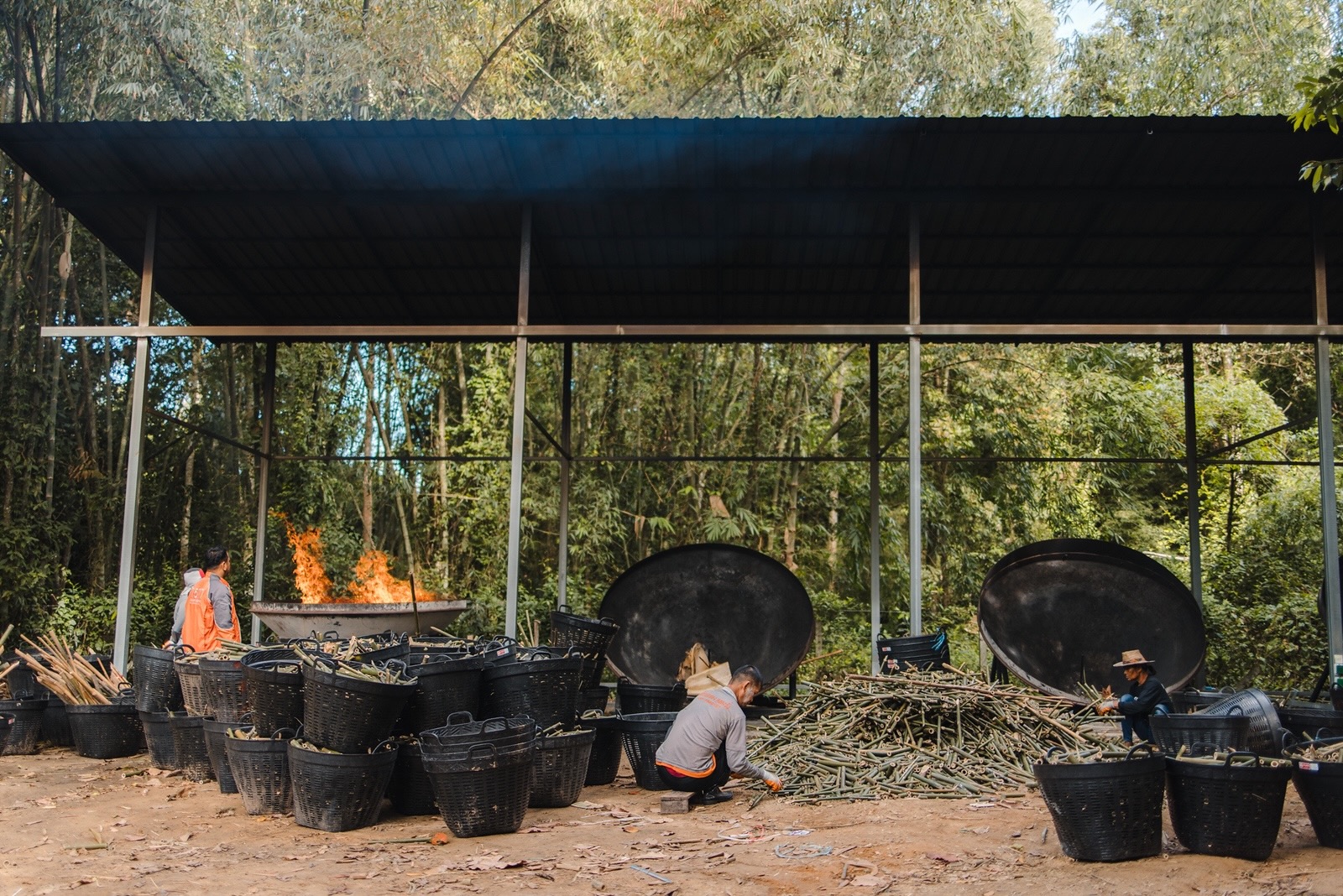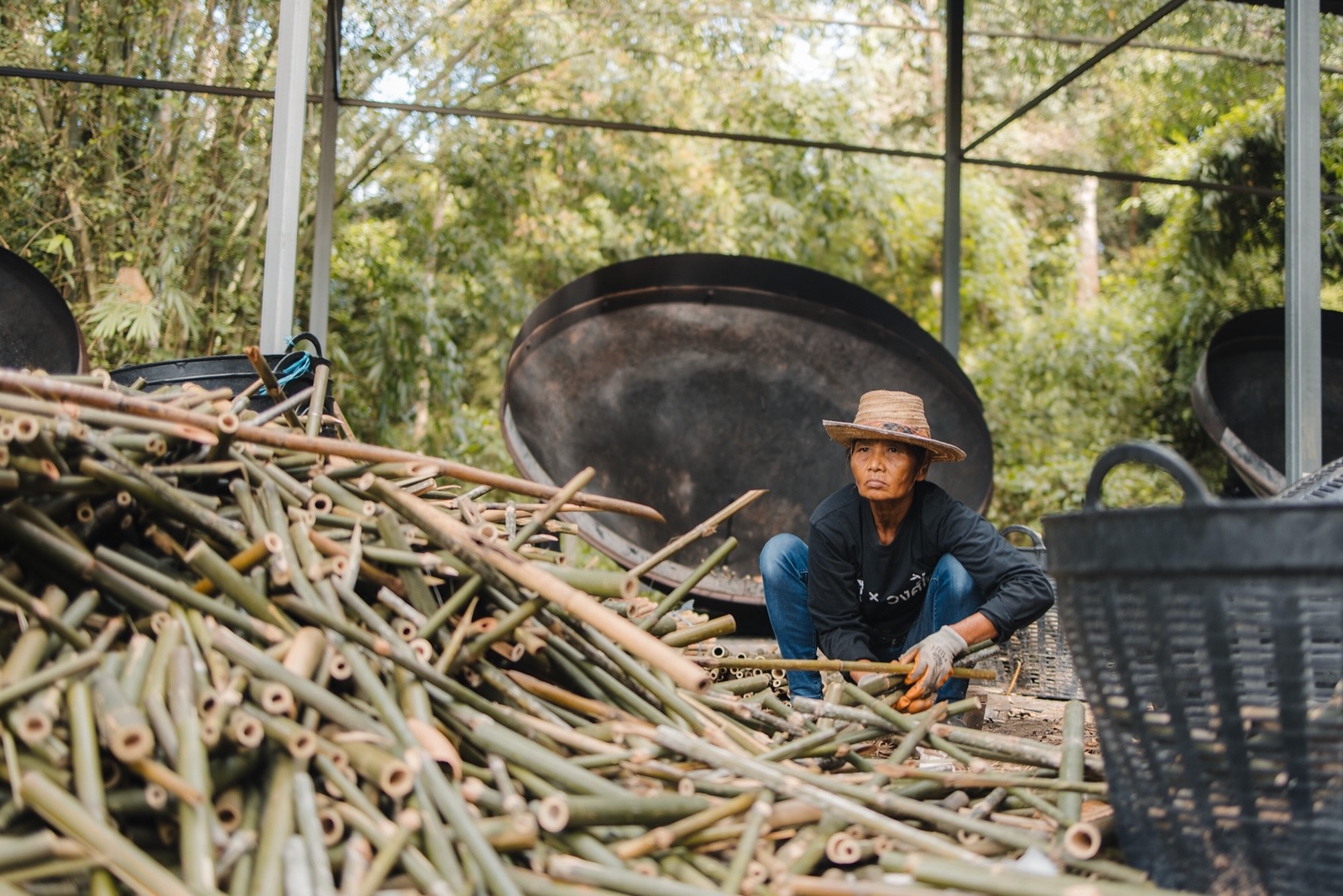Ashes to Art - Bamboo Biochar in Thailand
A community project led by Planboo and Wong Phai, transforming bamboo offcuts into biochar to remove CO2, improve soil quality, and empower the local community through job creation and economic growth.
Planboo and their partner Wong Phai operate a transformative community project in Ratchaburi, Thailand, focused on converting bamboo offcuts into biochar. This initiative is a critical step in addressing the environmental challenges of burning bamboo waste and offers substantial benefits to the local community.
Partnering with local bamboo marketplaces (enterprises producing artisanal bamboo crafts and furniture), Wong Phai's project repurposes discarded bamboo offcuts into biochar, an innovative solution that prevents CO2 emissions from open burning.
Environmental Benefits: The production of bamboo biochar mitigates environmental harm by reducing greenhouse gas emissions, improving air quality and enhancing soil quality. This leads to better crop yields and reduced dependence on chemical fertilisers.
Community Empowerment: The project fosters local economic growth by creating job opportunities and supporting families. Stable employment allows parents to invest in their children's education, breaking the cycle of poverty and promoting a brighter future.
How You Can Support: Join us in supporting Wong Phai’s mission by participating in our monthly subscriptions or a one-off contribution. Your contribution will help scale up the project, enhance carbon removal efforts, and support local communities.
Be Part of the Change: Wong Phai’s bamboo biochar project is more than just an environmental initiative; it's a movement towards sustainable development and community empowerment. Your support can make a significant difference in transforming waste into valuable resources, fostering local economic growth, and promoting a greener future.
Project location
Technology and mechanism
Project certifications
Certifier
Standard
Global Artisan C-Sink
Registry ID
CSI-000569
Project registration date
Crediting period term
Project methodology
Planboo Biochar in the Tropics, Version 1
Current verifier of project outcomes
CERES-cert
Project details









